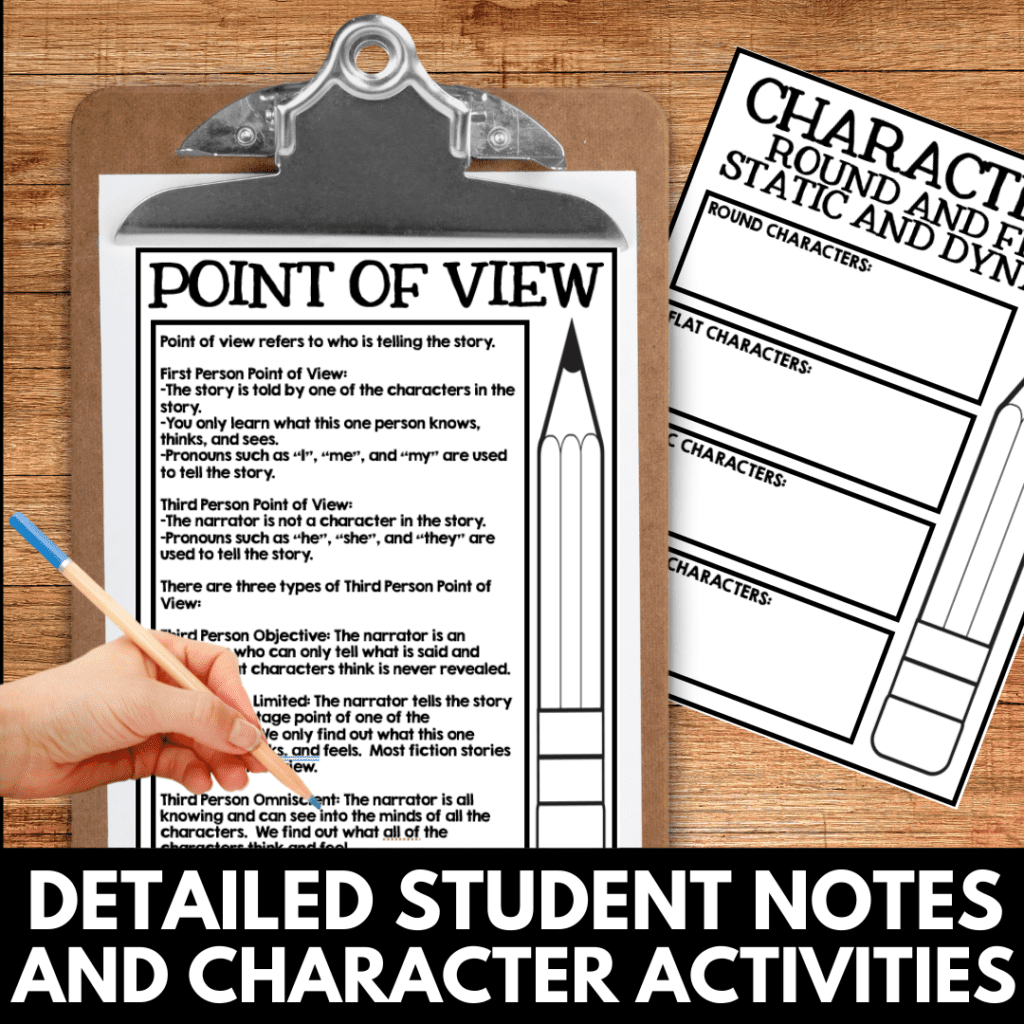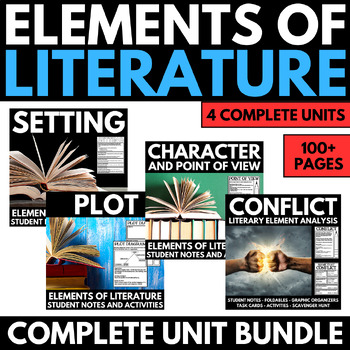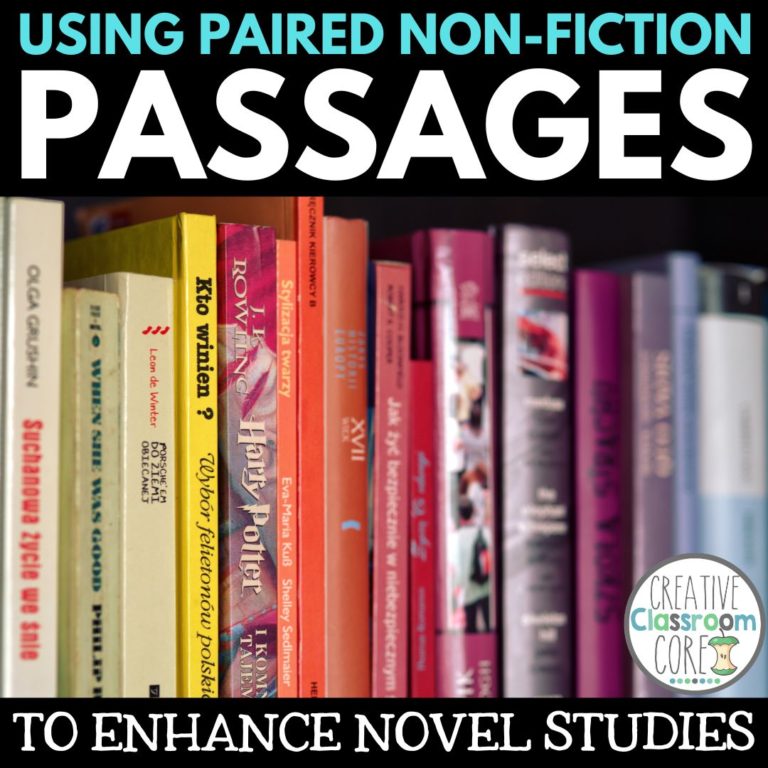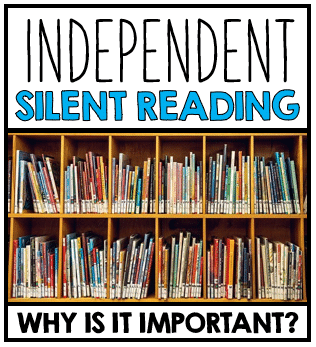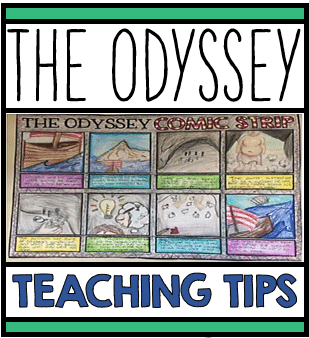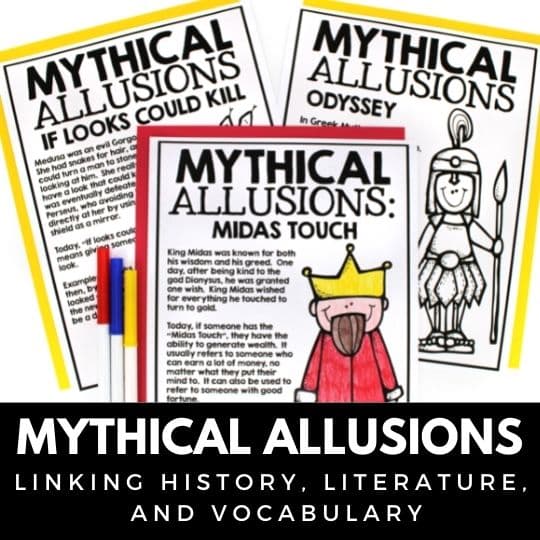Ways to Teach Literary Elements: Three Engaging Strategies
By MARISSA DESPINS Updated April 08, 2024
Creative ways to teach literary Elements
Before starting any novel study or short story unit, I find it crucial to review the elements of literature. I have taught grades 2-9 – no matter how old the kiddos are, and how much practice they have had with the literary elements, I find that review continues to be necessary. Because of this, I am always looking for new ways to to teach literary elements.
When teaching fiction, it is important to move past basic comprehension. Instead of simply asking students what they are reading, they need to be asked to analyze the text. By looking closely at literary elements, students are able to dive deep into the text, looking at things like character motivation, theme, and conflict. This helps students develop a deeper understanding of what they are reading.
For some no-prep activities to help you teach about the elements of literature, click on the image or button below!
In this post, I am going to share some of my favorite ways to teach literary elements. I hope you are able to take some of these ideas and use them to help review with your own students!
1- Character
Before I begin a focus lesson on any of the literary elements, I have students take notes. This makes sure that everyone in the group has the same core understanding. We focus on things like protagonists and antagonists, flat, round, static, and dynamic characters, and point of view. We keep all of our notes in an Interactive Notebook. This works really well. The students are able to refer back to the notes as we examine different short stories and novels throughout the year. Because of this, interactive notebooks are one of my favorite ways to teach literary elements.
No Interactive Notebook is complete without foldable activities. I have my students create several different foldables related to character to add to their notebooks. Again, keeping these in their Interactive Notebooks is super helpful. This is because they are able to refer back to them when needed.
For additional character teaching ideas, check out our guide to teaching character analysis and tips for understanding character traits!
2- Conflict
When looking at conflict, we first examine the different types. We take notes that focus on person vs person, person vs nature, person vs self, and person vs the supernatural. Then, I like to pull out a task card activity to help review. Tasks cards are one of my favorite ways to teach literary elements, as I really like using task cards in my classroom. They are a nice way to switch things up from traditional worksheet type activities. I also like how they can be adapted and used many different ways.
While these task cards work great for individual practice, I really like to use them with small groups. First, I divide students up. Then, I pass each group a stack of task cards and a recording sheet. Student groups take turns pulling cards, discussing answers, forming a consensus, and recording results. This activity encourages group discussion and really ups the engagement factor.
These task cards also work great when used Scavenger Hunt style. Simply take the task cards and tape them up around your classroom, hallway, or outdoor space. Pass each student a clipboard and a recording sheet, and have them hunt for the cards before recording the answers. Want to make it extra fun? Turn off the lights and pass each kid a flashlight. This activity gets the kids up and moving, and is much more engaging than your typical worksheet.
3- Setting
After teaching the key aspects of setting, my favorite review activity to do with students of all grade levels is this “Describe a Setting” activity.
Students are given stacks of photo cards, and are asked to use descriptive language to describe the different settings by using their five senses. Students must also analyze the physical world, time of action, and social environment of their chosen cards. I love this activity because it asks students to practice their descriptive writing skills, while also reinforcing the key elements of setting. After students are done the activity, I have them share their writing with the class – these always prove to be incredibly entertaining.
For additional ways to teach literary elements and writing activities that you can add to your classroom curriculum, check out our posts on descriptive writing and the RACE writing strategy!
Looking for a FREE resource to teach the Elements of Literature?
Click here or on the images below to download a FREE activity to teach plot! It includes detailed student notes and fill in the blank notetaking templates!
Interested in snagging some of the activities mentioned in this post?
Head on over to my TPT store by clicking here or on the image below to grab the resources mentioned in this post to use in your own class!
Looking for some related posts?
Check out some of my previous posts on teaching the elements of literature!
The Very Best Short Stories for Middle School
Spooky Halloween Short Stories – Part One
Spooky Halloween Short Stories – Part Two
Interested in signing up for my email list?
If you are interested in signing up for my email list, you can do so by clicking on the link below. I periodically send out emails with free resources, teaching tips, and exclusive deals. Signing up will also give you immediate access to some of my best selling Interactive Notebook resources – foldable activities, graphic organizers, and other fun activities.

